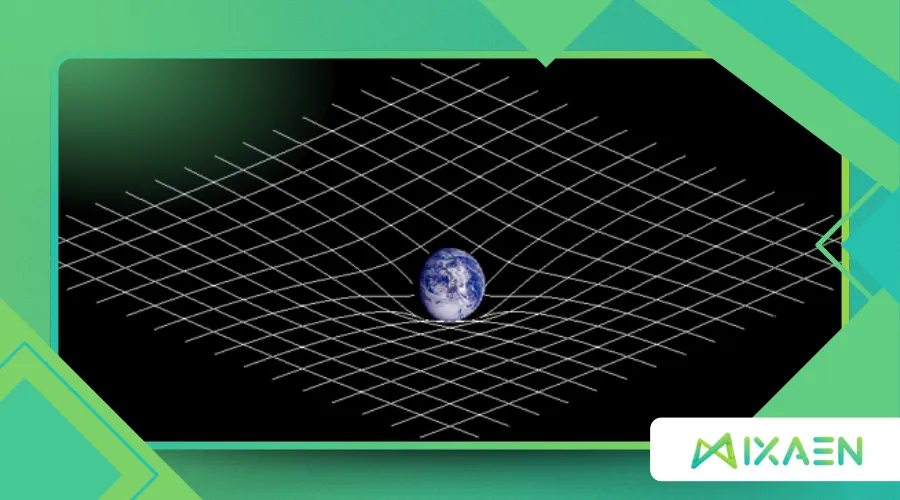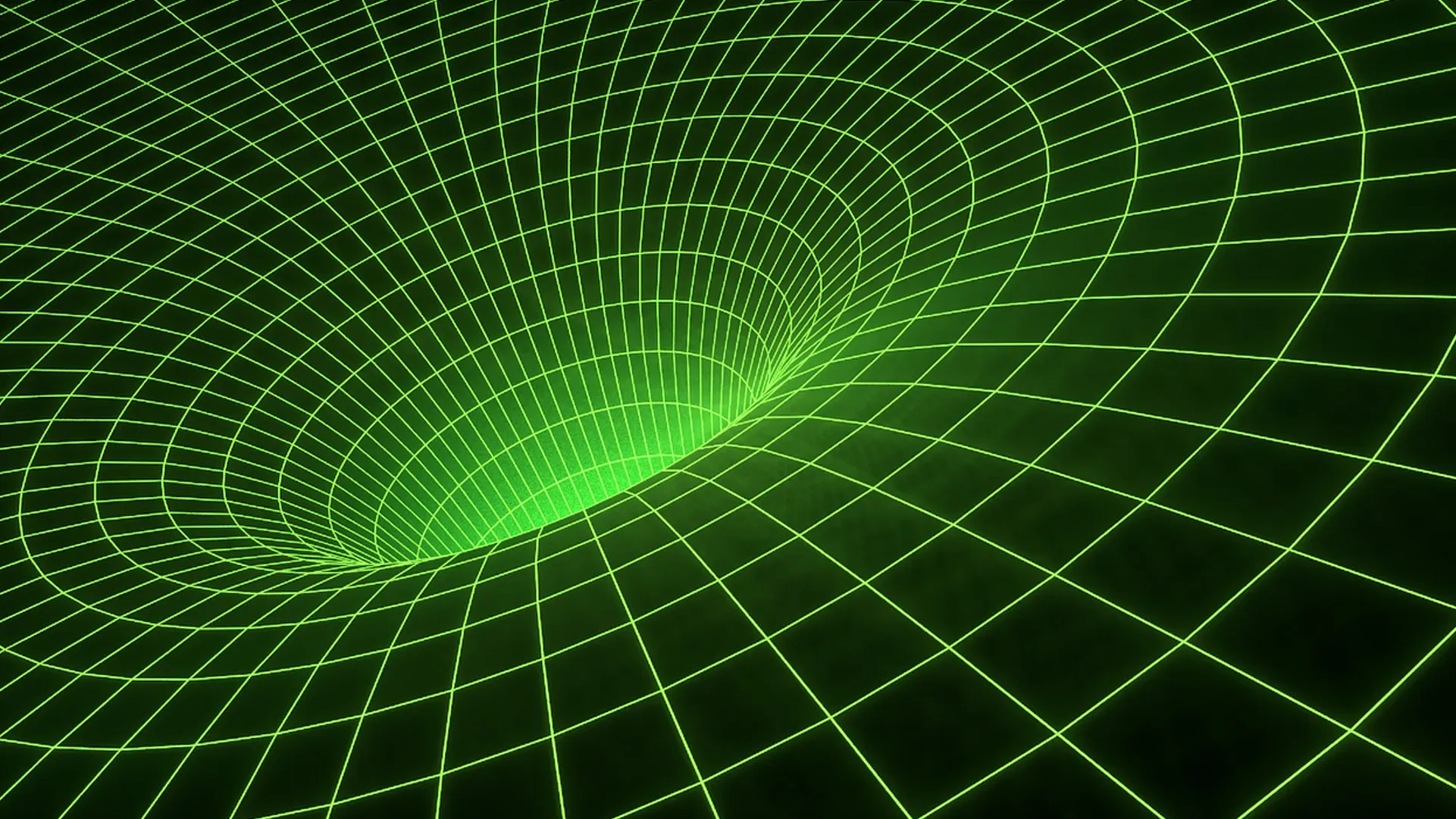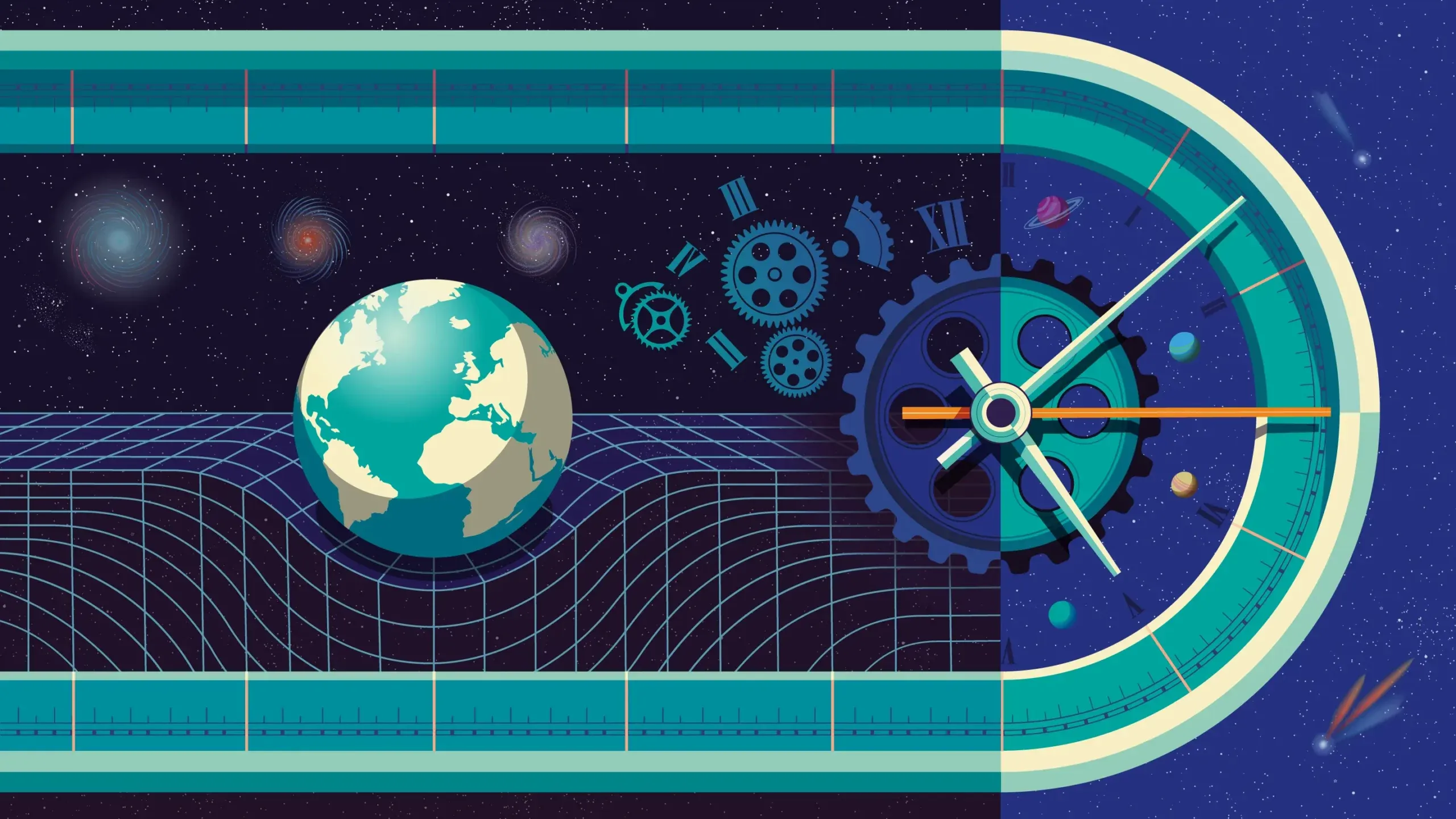Are Time Loops Possible in Curved Spacetime?

Time loops, those captivating sci-fi tropes where events cycle endlessly, spark curiosity about whether they could exist in reality.
Anúncios
The concept, often depicted in films like Groundhog Day or Edge of Tomorrow, hinges on the idea of a person or system trapped in a repeating segment of time.
But beyond Hollywood’s imagination, could the physics of curved spacetime—where gravity warps the fabric of reality—permit such phenomena?
This question bridges speculative fiction and cutting-edge theoretical physics, demanding a dive into relativity, quantum mechanics, and the geometry of the cosmos.
Let’s explore whether time loops are a plausible quirk of the universe or merely a narrative device, weaving through the latest scientific insights with a critical lens.
The fascination with time loops also stems from our desire to understand time itself and its implications on existence.
As we delve deeper into this topic, we will encounter both theoretical possibilities and philosophical dilemmas that challenge our perception of reality.
The Physics of Curved Spacetime
Einstein’s general theory of relativity revolutionized our understanding of gravity, describing it not as a force but as a curvature of spacetime caused by mass and energy.
Massive objects, like stars or black holes, bend the fabric of reality, altering the paths of light and time itself.
This curvature is why clocks tick slower near a black hole—a phenomenon called gravitational time dilation.
Could this bending of spacetime create pathways where time loops back on itself, forming a closed loop?
The idea hinges on exotic solutions to Einstein’s field equations, particularly those involving extreme gravitational fields.
One such solution is the closed timelike curve (CTC), a theoretical path through spacetime where an object could return to its own past.
CTCs emerge in specific scenarios, like rotating black holes or wormholes, where spacetime is so warped that time and space swap roles.
Imagine a cosmic rollercoaster where the track loops backward, letting you revisit yesterday.
But here’s the catch: these solutions are mathematical, not observational.
No experiment has confirmed CTCs, and their existence raises thorny questions about causality and paradox.
Furthermore, the implications of curved spacetime extend beyond time loops, influencing our understanding of black holes and the universe’s evolution.
The ongoing research into gravitational waves and their interaction with spacetime could shed light on these profound questions.
Closed Timelike Curves and Time Loops
What exactly is a closed timelike curve?
Picture a spiral staircase in a warped universe.
As you climb, you realize you’re not ascending but circling back to the same step.
In physics, CTCs allow an object to follow a trajectory that returns to its starting point in both space and time.
This is the backbone of theoretical time loops.
In 1949, mathematician Kurt Gödel proposed a universe model where CTCs exist naturally due to cosmic rotation.
His solution, while elegant, doesn’t match our universe’s observed structure, which appears non-rotating on large scales.
Fast forward to 2023, a study published in Physical Review D explored CTCs in the context of rotating black holes, known as Kerr black holes.
Researchers found that while CTCs are mathematically possible near these objects, they require conditions—like negative energy densities—that defy known physics.
The study estimated a probability of less than 0.01% for naturally occurring CTCs in our universe, based on current cosmological data.
This statistic underscores the speculative nature of time loops, but it doesn’t rule them out entirely.
Could extreme cosmic events, like colliding black holes, create fleeting conditions for such loops?
Additionally, the exploration of CTCs continues to inspire theoretical physicists to reconsider the nature of time and reality itself.
For more details on current research, you can visit Physical Review D.
| Concept | Description | Implications for Time Loops |
|---|---|---|
| Closed Timelike Curve (CTC) | A path in spacetime allowing return to the past | Theoretical basis for time loops, but requires exotic conditions |
| Kerr Black Hole | Rotating black hole with extreme spacetime curvature | May host CTCs, but only in mathematically ideal scenarios |

Wormholes and Cosmic Shortcuts
Another avenue for time loops lies in wormholes—hypothetical tunnels connecting distant points in spacetime.
Proposed by Einstein and Nathan Rosen in 1935, wormholes could, in theory, link different times as well as places.
Imagine folding a piece of paper and poking a hole through it: the shortcut could connect today to last week.
If a wormhole’s ends move at relativistic speeds or sit in different gravitational fields, time dilation could make one end “younger,” creating a potential time loop.
Here’s an original example: Suppose a wormhole connects Earth to a planet near a black hole.
Astronaut Alice steps through, spends an hour on the other side, and returns to find it’s a decade earlier on Earth.
If she repeats this, she’s caught in a cycle, reliving the same decade.
But wormholes aren’t free passes to time travel.
They require exotic matter with negative energy to stay open, a substance we’ve never observed in significant quantities.
The Large Hadron Collider has probed for such matter, yielding no evidence to date.
So, while wormholes fuel the imagination, their role in time loops remains speculative.
The ongoing search for evidence of wormholes could reshape our understanding of the universe’s structure and the nature of time itself.
As scientists continue to explore these concepts, the possibility of discovering new physics remains tantalizing.
+ Could the Speed of Light Be Slowing Down Over Time?
Quantum Mechanics and Temporal Tangles
Quantum mechanics adds another layer to the puzzle.
At subatomic scales, particles behave in ways that defy classical intuition, with phenomena like superposition and entanglement suggesting time isn’t always linear.
Could quantum effects enable time loops?
Some physicists, like those at the Perimeter Institute, propose that quantum gravity—where quantum mechanics meets relativity—might allow temporal anomalies.
For instance, a particle in a superposition could theoretically exist in multiple time states simultaneously, mimicking a loop.
Consider this original scenario: A quantum computer, entangled with particles near a black hole, processes data that influences its own past computations.
This creates a feedback loop, where the output shapes the input ad infinitum.
Such a system could simulate a time loop within a confined quantum state.
However, scaling this to macroscopic objects—like humans—faces immense hurdles, as quantum effects dilute at larger scales.
The question looms: Are we chasing a quantum mirage, or could future breakthroughs unlock temporal cycles?
The intersection of quantum mechanics and relativity remains one of the most exciting frontiers in modern physics, with implications that could redefine our understanding of time.
As researchers delve deeper into quantum theories, we may uncover new insights into the fabric of reality.
| Theory | Key Feature | Relevance to Time Loops |
|---|---|---|
| General Relativity | Spacetime curvature by mass | Enables CTCs in extreme conditions |
| Quantum Mechanics | Superposition and entanglement | Suggests non-linear time at subatomic scales |

The Paradox Problem
Time loops invite paradoxes, like the classic “grandfather paradox”: If you travel back and prevent your grandfather’s birth, how do you exist to travel back?
One resolution is the self-consistency principle, proposed by physicist Igor Novikov.
It suggests that any action in a time loop must be consistent with the timeline, preventing paradoxes.
For example, if you try to stop an event, some force—like a misfired gun—ensures you fail, preserving history.
Alternatively, the many-worlds interpretation of quantum mechanics posits that each loop spawns a new universe.
If Alice loops back and changes an event, she creates a parallel timeline, leaving the original intact.
This avoids paradoxes but multiplies realities, a concept that’s philosophically dizzying.
Both solutions, while clever, lack empirical backing, making time loops a theoretical playground rather than a proven phenomenon.
As debates about the nature of time and causality continue, the implications of these paradoxes challenge our understanding of reality.
Philosophers and scientists alike grapple with the consequences of time travel and its potential effects on the universe.
++ Is the Universe Hiding an Unknown Force We Can’t Detect?
Why Time Loops Captivate Us
Beyond physics, time loops resonate culturally.
They symbolize second chances, the chance to correct mistakes, or the horror of eternal repetition.
Philosophically, they challenge our perception of free will.
If you’re trapped in a loop, are your choices truly yours?
This tension drives narratives and fuels scientific curiosity.
The allure lies in their blend of mystery and possibility, pushing us to question reality’s boundaries.
An analogy helps here: Time loops are like a song stuck on repeat.
Each cycle feels familiar, yet subtle variations—new choices or outcomes—might shift the tune.
This interplay of repetition and change mirrors the scientific quest to understand time’s flexibility in curved spacetime.
The cultural impact of time loops extends beyond entertainment, influencing literature, art, and even philosophical discourse.
As we explore these themes, we find reflections of our own desires for redemption and understanding.
Current Research and Future Horizons
Recent advances in gravitational wave detection, like those from the LIGO collaboration, offer hope for probing spacetime’s extremes.
While LIGO hasn’t detected CTCs, its precision could reveal anomalies near black holes or neutron stars, hinting at conditions for time loops.
Meanwhile, quantum computing experiments, like those at Google’s Quantum AI lab, push the boundaries of temporal manipulation at microscopic scales.
These efforts, though nascent, keep the door open for discoveries.
What’s next?
Future telescopes, like the Extremely Large Telescope (set for first light in 2028), may observe distant black holes with unprecedented detail, testing theories about CTCs.
Quantum gravity models, still in their infancy, could also redefine time’s nature.
The question isn’t just whether time loops are possible but whether our universe permits the conditions for them to arise naturally.
As technology advances, the potential for groundbreaking discoveries in both astrophysics and quantum mechanics grows, offering exciting possibilities for the future.
The pursuit of knowledge in these fields promises to reshape our understanding of the universe.
Conclusion: A Cosmic Conundrum
Time loops, while tantalizing, remain on the fringes of physics, tethered to speculative mathematics rather than observable reality.
Curved spacetime offers theoretical pathways—CTCs, wormholes, quantum anomalies—but each comes with caveats, from exotic matter to paradox resolution.
The 2023 study in Physical Review D reminds us that the odds are slim, yet the universe is vast and full of surprises.
Could a breakthrough redefine our understanding of time?
For now, time loops live in the realm of “possible but improbable,” a cosmic riddle that challenges both science and imagination.
The exploration of these ideas not only fuels scientific inquiry but also inspires a deeper appreciation for the mysteries of existence.
As we continue to ponder the nature of time, we may uncover truths that reshape our reality.
